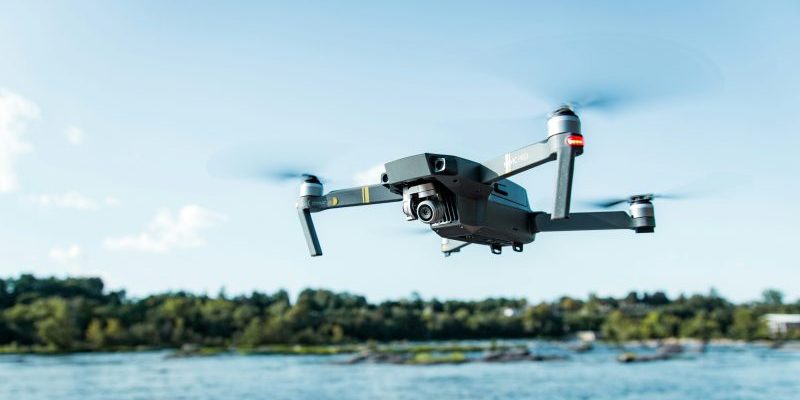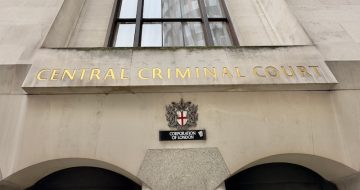County Court advocate and drone pilot, Jalal Chohan, takes a look at drone regulation in the UK

Becoming a drone pilot is an exciting journey. But for budding hobbyists, deciphering the complex web of drone regulations often feels like navigating uncharted airspace. Add in the allure of capturing stunning footage of historic landmarks, and you’re faced with an even trickier legal minefield.
For those eyeing aerial shots of iconic sites like Stonehenge, Hadrian’s Wall, or the Battle of Hastings Abbey, it’s essential to understand the restrictions imposed by organisations like the National Trust and English Heritage — both of which maintain strict bans on drone use across their properties. But are these bans legally enforceable?
The drone ban: National Trust and English Heritage policies
On the surface, the policies of both organisations seem unequivocal: drones are not welcome. They cite safety concerns, visitor experience, and environmental impacts as reasons for the prohibition. However, these blanket bans raise a crucial legal question: who owns the airspace above their properties?
Airspace ownership: The legal perspective
English law does not grant landowners ownership of all the airspace above their property. The landmark case of Bernstein of Leigh v Skyviews & General Ltd clarified this, establishing that landowners control only the airspace necessary for the “ordinary use and enjoyment” of their land. Beyond that, the airspace is public.
Legislation under the Civil Aviation Act 1982 further bolsters this position. Section 76 explicitly states that aircraft—including drones—flying at a “reasonable” height are not considered to trespass.
But what qualifies as “reasonable” remains undefined, leaving drone pilots in a legal grey area.
The legal grey area: A closer look
The ambiguity surrounding the ownership and use of airspace above National Trust and English Heritage sites highlights a significant gap in UK drone law. While pilots may rely on Bernstein and Section 76 of the Civil Aviation Act to justify flying at reasonable heights, the lack of clarity on what constitutes “reasonable” or the starting point of public airspace creates uncertainty.
This legal vacuum leaves drone pilots exposed to potential challenges, including claims of nuisance, privacy breaches, or even trespass if their flights are perceived to interfere with the ordinary enjoyment of the land. Until these issues are addressed, drone operators must exercise caution and consider the potential for legal disputes.
Analysing the legal grey area
Further complicating matters, the case of Anchor Brewhouse Developments Ltd v Berkley House (Docklands) Developments Ltd (1987) addressed the concept of airspace trespass at lower altitudes. This case confirmed that landowners have rights over airspace necessary for the reasonable enjoyment of their property.
However, it remains unclear whether that principle applies to modern drone usage, as the case predates drone technology.
Similarly, while Section 76 of the Civil Aviation Act protects flights at reasonable heights, it does not clarify whether landowners can impose enforceable restrictions based on their preferences.
The High Court’s recent decisions of MBR Acres Ltd v Curtin [2025] and Anglo International Upholland Ltd v Wainwright and Persons Unknown [2023] provide some guidance on the development of the law in this area.
In the Anglo International Upholland case, the Court held that flying the drone at a distance that was low enough to provide recordings of the site could not be considered “reasonable”. The Court granted an injunction against the flying of drones over the property. The Court in this case was primarily concerned with the intention and purpose of the flight, which was to encourage trespass onto property which was dangerous.
Want to write for the Legal Cheek Journal?
Find out moreAnglo International Upholland raises considerable concern for drone users for two key reasons:
• First, the judgment does not refer to a height which may be considered reasonable. Drone enthusiasts will be aware that drones can provide recordings of an individual building from over 120 meters above the site (the maximum legal height for a sub-250g drone).
• Second, the Court defined “reasonable height” by looking at the purpose of the recordings carried out by the drone rather than looking solely at whether the drone itself was flying at a reasonable height. Section 76 focuses purely on height and not intent. The Court arguably expanded the meaning of trespass beyond legislative intent potentially conflating trespass with nuisance, privacy invasion or facilitation of wrongdoing.
MBR Acres Ltd related to protestors flying drones over MBR Acre’s sites, which are used for the breeding of animals for scientific research. The Court dismissed the claim of drone trespass for a drone being flown at around 50 meters above the site on the basis that it did not interfere with the ordinary use of the land.
The decision in MBR Acres Ltd will be welcomed by drone enthusiasts who wish to operate within legal boundaries as it reaffirms the principle from Bernstein that landowners’ rights in the airspace above their property are limited to the height necessary for ordinary use. At the same time, it helps to preserve a balance between private property rights and the legitimate recreational and commercial use of drones.
Trespass and launch sites: A balancing act
While flying over a property might not constitute trespass, launching or landing a drone on private land without permission almost certainly does. Additionally, operating a drone from within the property boundaries, even if it was launched elsewhere, could raise trespass concerns.
Drone enthusiasts must also tread carefully with privacy and data protection laws, particularly when using cameras for aerial photography or videography.
What does this mean for drone pilots?
For now, flying drones over National Trust or English Heritage sites remains legally contentious. However, provided there are no CAA no‑fly zones, pilots can legally fly above these properties—so long as they launch from outside the boundaries, maintain reasonable heights, and avoid disturbing visitors or wildlife.
The future of drone regulation
As drone technology becomes more accessible, the law in this area is likely to evolve. Future case law or legislation could provide clearer guidelines on where and how drones can operate—particularly over heritage sites and other sensitive areas.
Until then, I’ll be launching my sub‑250g drone from public land, flying high enough to avoid nuisance claims, and capturing aerial views of my favourite historic places—one cautious flight at a time.
Jalal Chohan is a County Court Advocate, Middle Temple Scholar and drone pilot. He graduated from the Bar Course at The University of Law in London and was awarded prizes for the highest marks in the Drafting and Cross-Examination modules.
 (
( (
(

